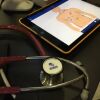Since the tragedy of Appleton Fire Department Firefighter Mitchell Lundgaard’s death, a Wisconsin attorney who regularly defends law enforcement officers and municipalities has begun recommending that officers take steps to better protect responders and the patient before naloxone is administered. Read more here.
By Dan White
Mitchell Lundgaard, an Appleton, Wisconsin, firefighter, died after being shot while responding to an EMS call Wednesday. The victim was a married father of three. Four people were shot, including the firefighter, a police officer, a bystander and the alleged assailant.
What happened: The call was reported to be a seizure. Upon arriving, responders were directed to treat a 47-year-old man onboard a bus at the Valley Transit Center in downtown Appleton. Appleton is a city of 75,000 people on the Fox River, about two hours north of Milwaukee.
Lundgaard was 14-year-veteran with the Appleton Fire Department, the department confirmed in a statement on Thursday. While or shortly after the FD first responders and staff of Gold Cross Ambulance attended to the patient, the incident escalated into shots being fired.
Why it’s significant: First responders are normally on high alert when a call is dispatched on a shooting. But we tend to be cavalier about personal safety on more routine calls. That’s the problem. The best solution is improved situational awareness.
We are taught to recite the manta, scene safe, BSI. The problem is there is no such thing as a totally safe scene anymore.
Top takeaways from the recent shooting that resulted in a firefighter LODD
Here are my top takeaways from the incident.
1. Improve situational awareness
Rich Gasaway has been preaching about situational awareness across the country for years. He is the founder and director at SAMatters.com. They teach that flawed situational awareness is one of the leading causes of near-miss events and a leading contributing factor in casualty events.
2. Search patients for injuries, weapons
Do a thorough secondary assessment on every patient. On a seizure call like this, ask the patient if they fell down. Ask if their head hurts while you palpate their head. Ask if their neck hurts while you palpate their head. Ask if their shoulders or arms hurt while you palpate both. Ask the patient to take a deep breath while you palpate the thorax. Ask if their belly or hips hurt while you touch those. Then ask if their legs hurt while you run your hands down their legs. This assessment will also reveal any weapons on their person.
3. Remember that all patients have the potential for violence
Never forget you are always at risk, even on a so-called routine call. From the information we have at this time, it seems this call went sideways so fast there was little time to react. But it is a classic case of a routine call turning into a deadly event.
Be alert, stay safe
Our hearts go out to Firefighter Lundgaard and his entire family. We also extend our deepest sympathies to his brothers and sisters at the Appleton Fire Department.
Please be alert, be careful and stay safe out there.
Additional situational resources
Learn more about situational awareness and scene safety with these resources from EMS1 and FireRescue1:
Importance of situational awareness process for emergency responders
- 3 steps to improve EMS situational awareness, spot danger
- Situational awareness tips to increase scene safety
- 5 scene size-up tips for EMS providers
- Rescue task forces and the scene safety dilemma
- Importance of situational awareness process for emergency responders
- What does scene safety really mean?













